Hydroponics is a method of growing plants without the need for soil. Plants are either rooted in an alternative substrate such as rock, wool, perlite, or suspended in, or washed by, a nutrient-rich solution of water and minerals. This method can be used outside, but the greatest benefits arise from its use inside during cooler months, enabling crops to be produced all year round.
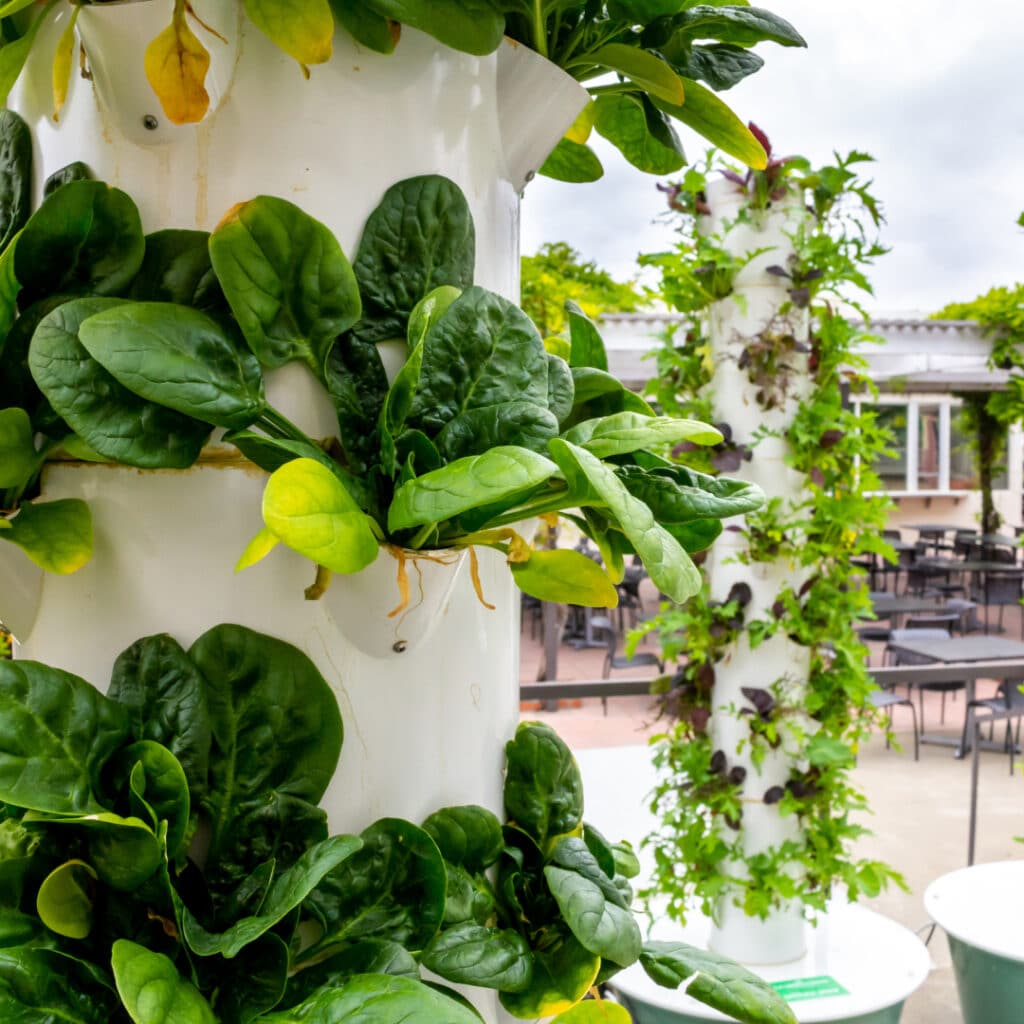
Hydroponic Benefits
Hydroponic methods have proven to be highly efficient for growing plants, especially when space is at such a premium. Although there is great variation in agricultural land statistics, one consistent theme arises time and time again: with rises in global population, hectares of food-producing land per capita (per person) are falling at an alarming rate. Faced with rising global food demand, hydroponics therefore has enormous potential both in the commercial and private sector. In fact, it is already widely used in glasshouses and polytunnels for growing salad crops.
It’s even increasingly gaining popularity in the domestic market, proving particularly useful for those living in apartments or rented accommodation where a garden or allotment isn’t available.
Organic vs Hydroponic Systems
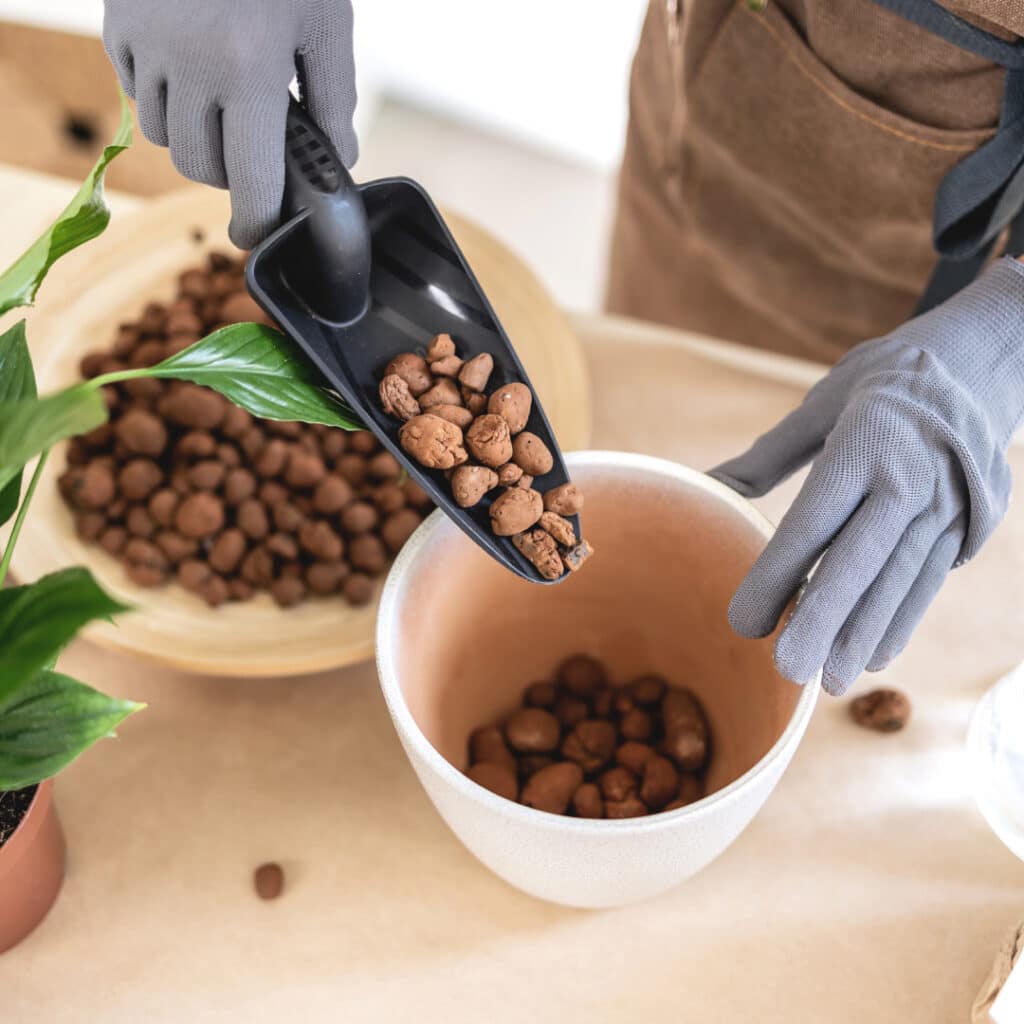
Plant growth requires the function of many complex metabolic processes. In a traditional setting, the soil provides anchorage for the roots, giving the plant stability, and acts as a reservoir containing water, oxygen, and nutrients needed by the plant to thrive.
By contrast, hydroponics delivers a nutrient-charged aqueous solution directly to the roots, keeping plants fed and hydrated. Because roots require oxygen, the solution is aerated, much like an aquarium to allow fish to survive. Supplemental lighting solutions can be achieved to mimic sunlight which enables plants to be grown throughout the year.
Plants can either be rooted in a soil-free substrate such as coconut coir, perlite, vermiculite, or rock wool; or suspended directly into a solution. Active systems utilise pumps to aerate and circulate the solution, whereas passive systems have no pumps or moving parts. Instead, gravity or capillary action delivers the solution to the plants’ roots, allowing oxygen to reach them either by partially suspending the roots in the solution or drip-feeding the solution over the roots, while ensuring oxygen reaches them between regular applications. In such systems, the solution drains back to a stock tank, from where it is recirculated until the solution is no longer viable.
The History of Hydroponics
The birth of modern hydroponics took place around 100 years ago, but humans have been devising creative ways of growing crops in difficult situations since farming began. While some historians believe that hydroponics were used by ancient civilisations, this is very much a matter of conjecture depending upon where definition boundaries fall. Nevertheless, there are many examples of irrigation and fertilisation methods throughout history. We’ll briefly explore them below.
The Aztecs built rafts of rushes and reeds called chinampas. These were lashed together and loaded up with organic, mineral-rich sediment from the lake bottom. Crops of vegetables, flowers, and even trees could be grown on these, and the roots were able to grow through the rafts and into the water.
The Ancient Egyptians maximised the benefits of the River Nile flooding and depositing mineral-rich silt across otherwise barren land. During the dry season, they were able to grow crops with the aid of irrigation. A simple device known as a shaduf (shadoof), a counterbalanced pole with a weight at one end and a bucket at the other, was used to deposit water either directly onto the land and into irrigation channels.
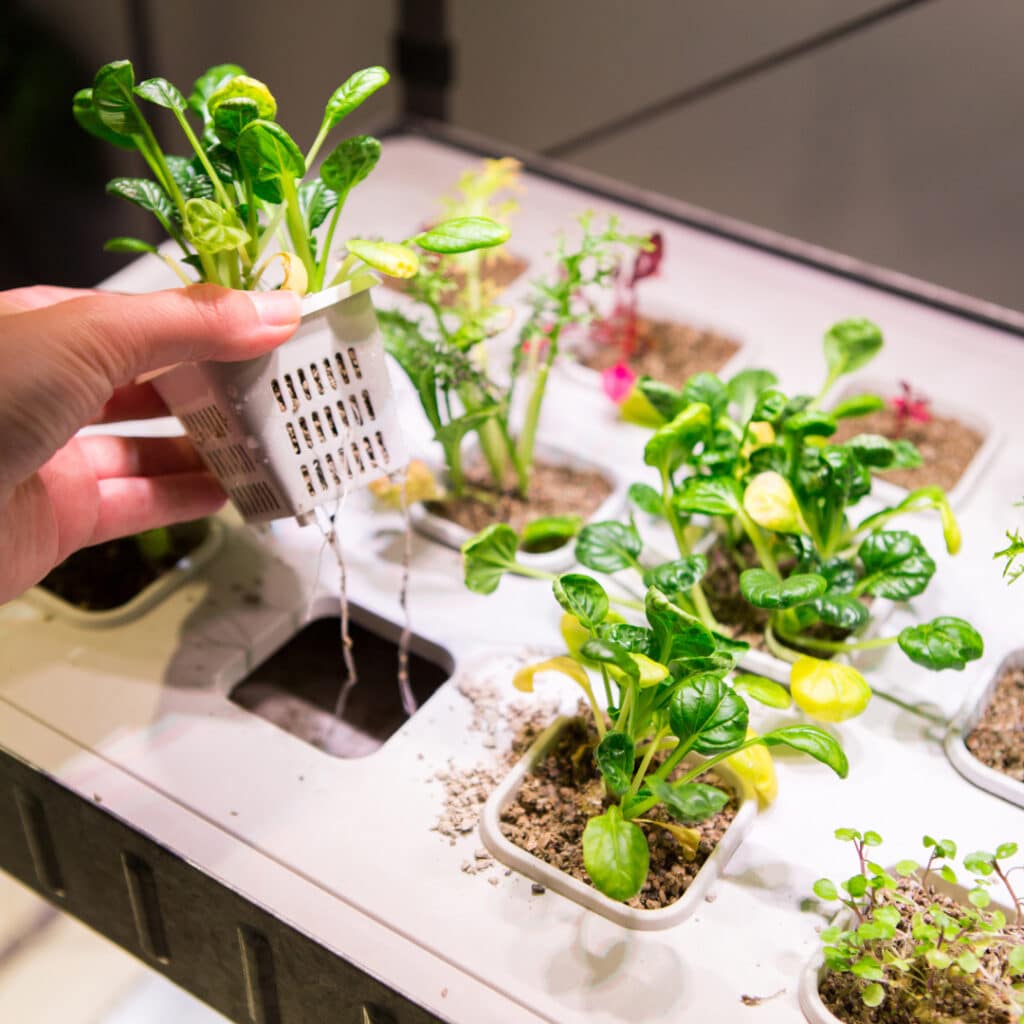
The existence of the Hanging Gardens (of Babylon) is a matter of debate, although they are elaborately described in several accounts. They were thought to be built around 600 B.C. and were speculated to have been destroyed by an earthquake in 226 B.C. Their exact location is by no means certain, although it is likely that a creative solution for irrigation would need to have been found. The Greek geographer, Strabo, described the gardens as:
“The ascent to the highest story is by stairs, and at their side are water engines, by means of which persons, appointed expressly for the purpose, are continually employed in raising water from the Euphrates into the garden.”
The method used could have been a chain pump; a continuous loop of receptacles (e.g. buckets, troughs, or clay pots) attached to a chain around winding gears. This device is known from archaeological excavations and texts to be in existence since around 700 BC.
Contemporary Hydroponic Methods
In 1929, following years of research, a fascinating article appeared in a popular science journal of the time. William Frederick Gericke, while working at the University of California, grew 7.6 m (25-foot) high tomato vines using hydroponics. It was claimed that a space of 2.3 m^2 (25 square feet) yielded 136 kg (300 pounds) of tomatoes. A similar tomato grown in soil usually produces only 3.2 kg (7 lb) of tomatoes. Similar experiments produced potatoes that grew 7 times faster than in soil. This had enormous implications for large commercial scale growing and the potential alleviation of world hunger. In fact, today, many greenhouse crops are grown using hydroponic methods.
Hydroponic Advantages
Hydroponics offers numerous advantages. Firstly, no soil is required, which conserves resources. Despite the absence of soil, plants grow at a significantly faster rate (sometimes double the normal growth rate) and produce increased yields. This is largely attributed to the nutrient density and available oxygen in the water. Furthermore, hydroponics allows for greater planting density, while also reducing pests, diseases, and essentially eliminating weeds and the need for pesticides.
Hydroponically grown plants use 80-90% less water than those traditionally grown in soil. In traditional growing methods, water is applied to the soil, which then seeps down to the plant roots. During this process, a significant amount of water evaporates. In contrast, the water solution in a hydroponic system is recirculated multiple times before it needs changing, at which point it can be used to water and fertilise ground-based planting. Additionally, precise control of light and temperature enables year-round plant growth. Systems can be set up for both small and large-scale operations, making them suitable for inclusion on a kitchen worktop, balcony, or living wall. Installation at comfortable heights provides easy access, particularly beneficial for individuals with mobility impairments.
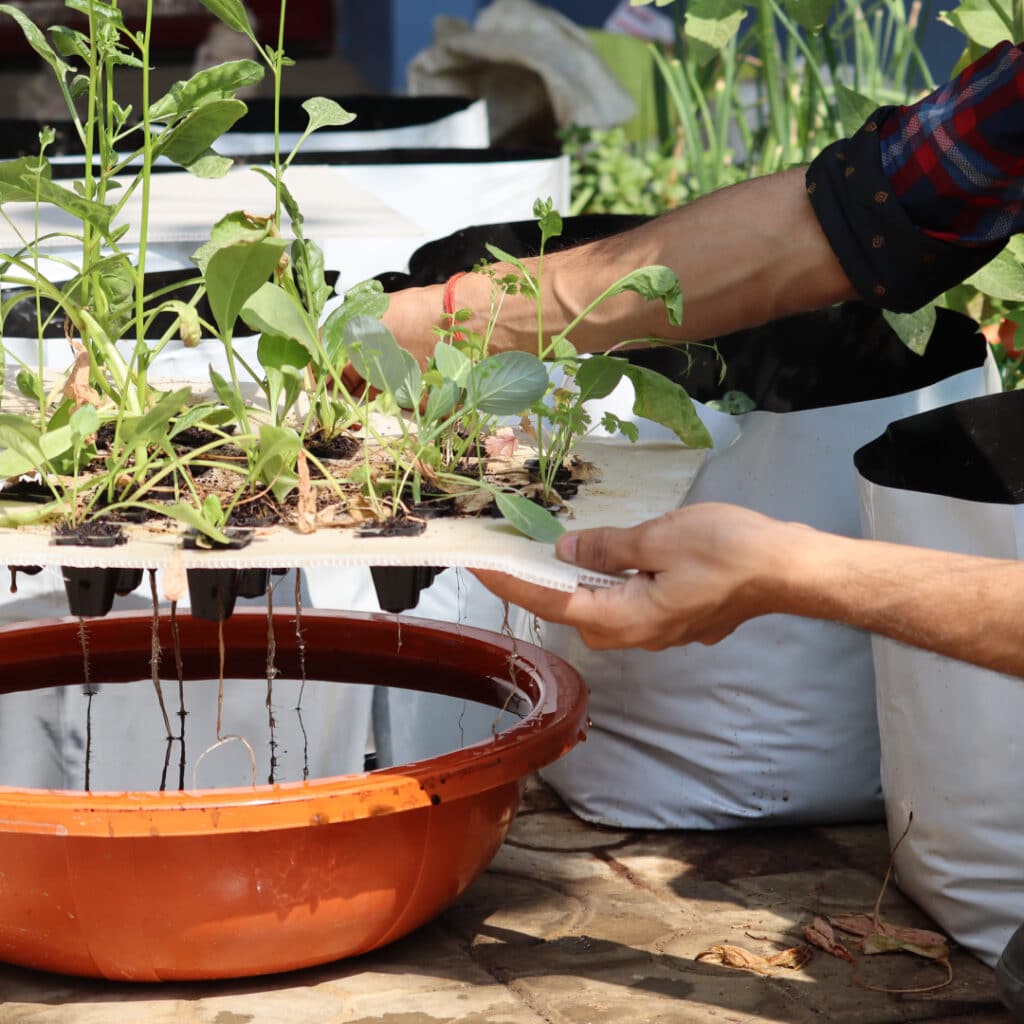
Hydroponic Disadvantages
Hydroponic systems require expensive set ups compared to traditional growing methods. Although hydroponic costs will vary depending on size and type; both passive and active systems rely on electricity for lighting, pumps, aerators, and fans which are all pricey. On a commercial scale, it would be vital to include back-up generators in case of power outages.
In a traditional growing environment, the soil offers a degree of protection from extreme changes. However, in hydroponics, in the case of inadequate conditions or malfunctioning equipment, plants can deteriorate rapidly. The same can be said for waterborne diseases, which can ravage through plants at alarming rates. There is no doubt that careful monitoring is required to maintain a successful balance of nutrients and to ensure that equipment is clean and functioning correctly.
How to Start a Hydroponic Garden
Three hydroponic systems are suitable for beginners: wick, raft, and ebb and flow. We’ll discuss each of them in more detail below.
Wick – The wick system operates through capillary action; it is the simplest of the three with no moving parts, making it ideal for growing microgreens, herbs, and peppers.
Raft – The raft system involves plants sitting on a floating platform with their roots suspended into the solution below. These systems require the use of a pump to oxygenate the water and are particularly suited for growing lettuce. In commercial settings, rafts float on approximately 450 mm (18 inches) of nutrient-rich circulating tank water, with air bubbles providing oxygen to the roots. For domestic use, a compact raft system with an integral pump and adjustable height lighting is available. A window allows for easy monitoring of water levels.
Ebb and flow – In the ebb and flow system, the growing medium is periodically flooded and then allowed to drain away. This process may be repeated several times daily to ensure that plants receive the correct levels of nutrients and oxygen. Typically, some of the root mat is exposed to air, even during flooding. The excess water drains away to a holding tank below for recirculation.
Hydroponic Nutrients
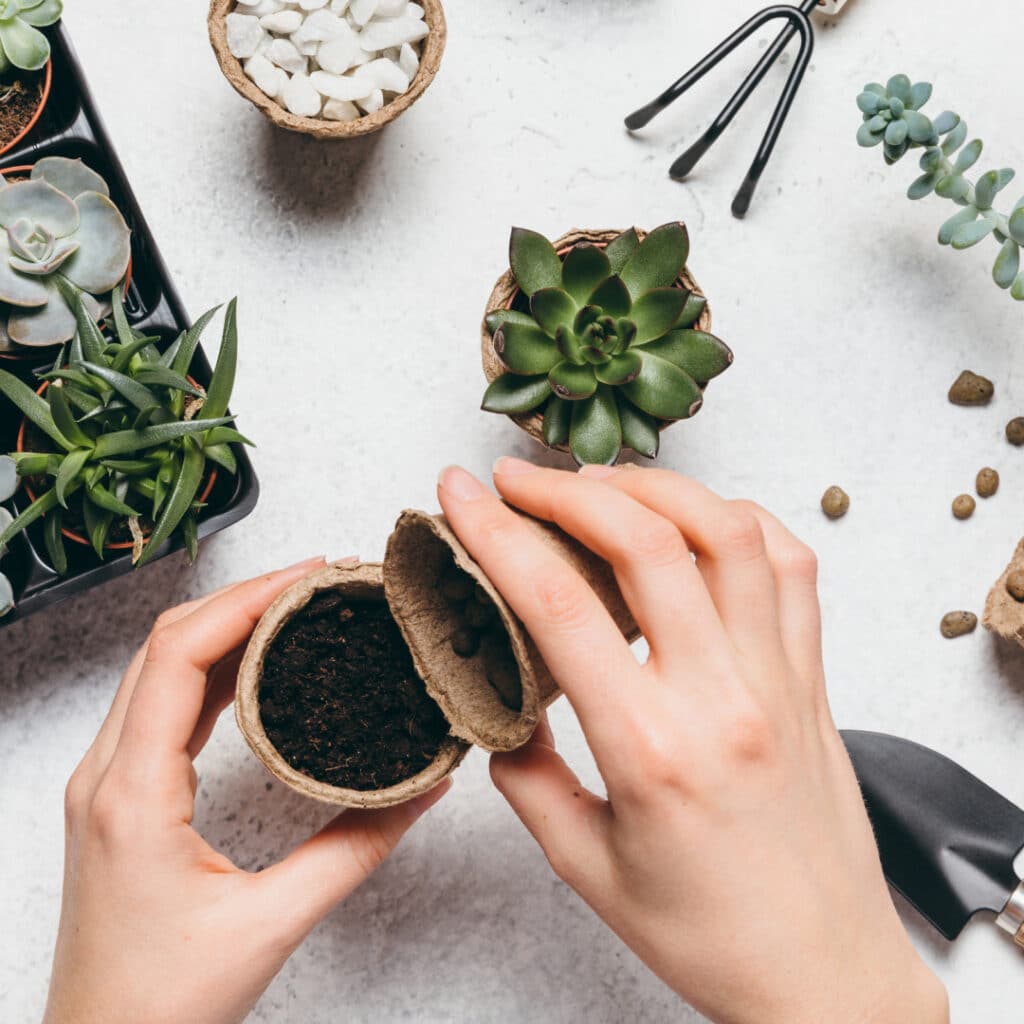
The nutrients can be mixed from chemicals such as potassium nitrate and magnesium sulphate, but it’s easier to buy them ready-made. Vigilant maintenance is required: as water is used by the plants, the nutrient concentration in the solution increases, which can damage the plants. This can be monitored using a meter to test the solution’s electrical conductivity and rectified by adding water. The solution needs to be changed approximately every two weeks and can be used to water garden soil as a fertiliser.
Monitoring pH is also crucial: an ideal level is between 5.8 and 6.2. To achieve this, a pH meter or test papers are used for regular testing, and baking soda or citric acid can be used to raise or lower the ph.
The solution will contain a mix of macronutrients (nitrogen, phosphorus, potassium, magnesium, and sulphur) and micronutrients (copper, boron, iron, manganese, molybdenum, and zinc). Experienced growers will adjust these according to specific crops and individual requirements. As with other forms of horticulture, both organic and non-organic routes are possible, while some intrepid growers even opt to make their own solutions.
While the method may seem complex, the implications for hydroponics are clear, especially when considering the vast demands on our planet. As a species, we yearn to reconnect with nature, as shown by the growing trend for biophilic design. What better way to spend your time than by cultivating microgreens, herbs, and salad for the table? Furthermore, the taste and nutritional value of fresh, organic food are terrific and immensely satisfying.

